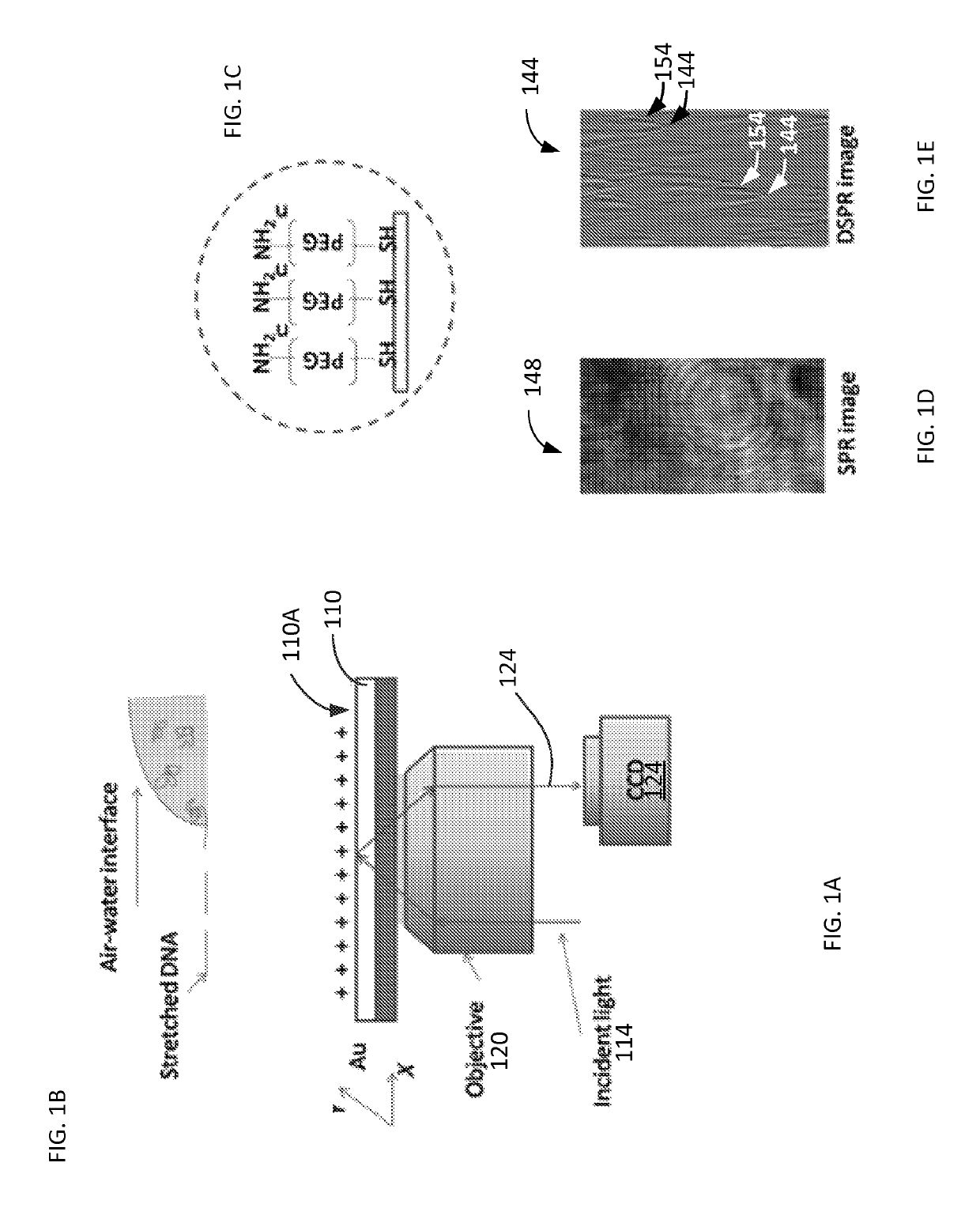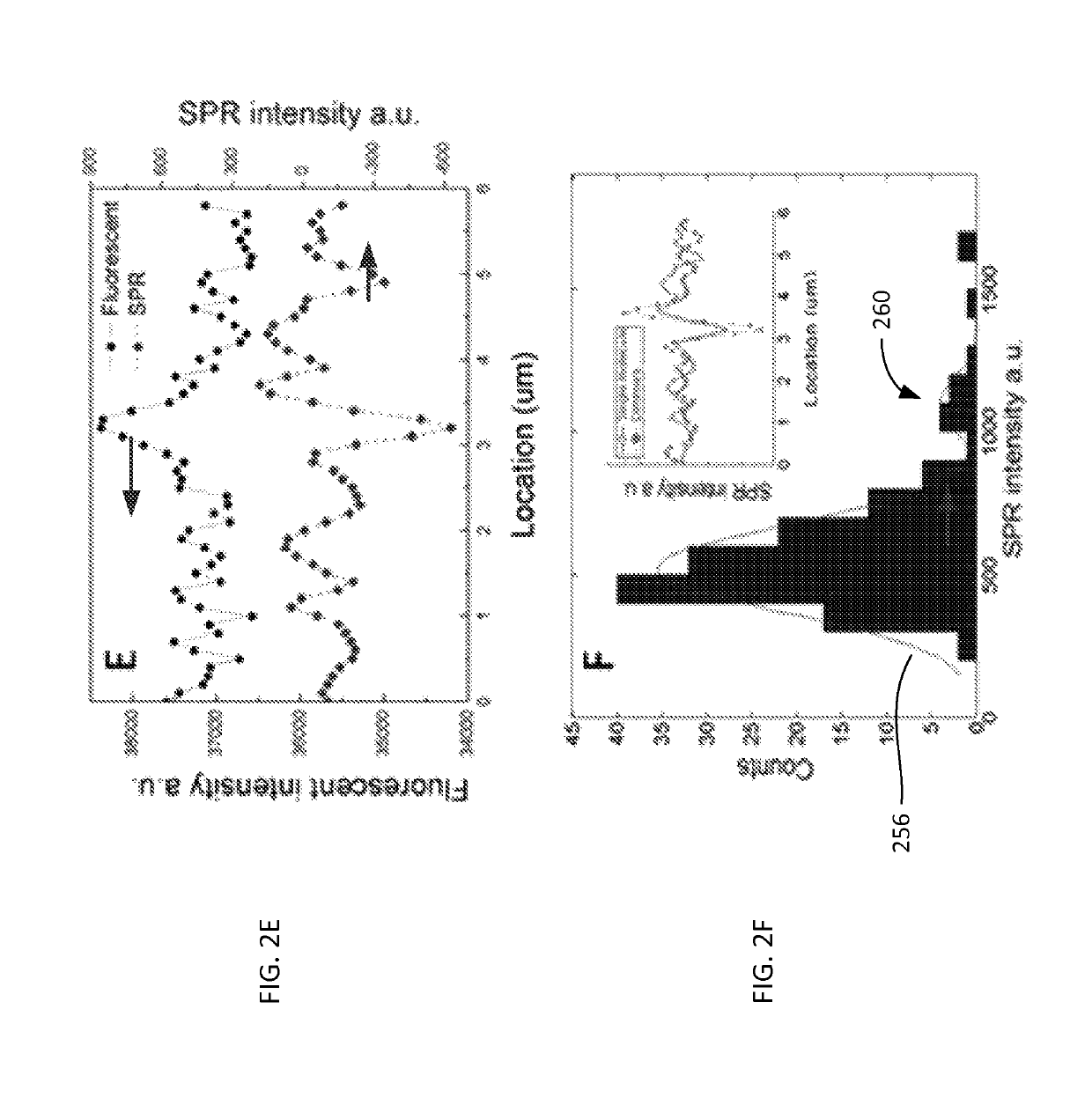Plasmonic imaging and detection of single DNA molecules
a plasmonic imaging and single molecule technology, applied in the field of single molecule detection, can solve the problems of difficult to quantify the image intensity, study single molecules over a long time, and limited image contrast of optically transparent samples.
- Summary
- Abstract
- Description
- Claims
- Application Information
AI Technical Summary
Benefits of technology
Problems solved by technology
Method used
Image
Examples
Embodiment Construction
[0050]Materials used in experiments included λ-DNA (cIind 1 ts857 Sam 7) (48,502 bp), TE buffer (1×, pH 8.0), and Sma I digestion enzyme from Invitrogen (Carlsbad, Calif.); YOYO-1 dye (1 mM in DMSO) from Molecular Probes (Eugene, Oreg.). Thiol-PEG-Amine (HS-PEG-NH2, MW 1000) from Nanocs (Boston, Mass.), and 2-mercaptoethanol from Gibco (Grand Island, N.Y.).
[0051]Surface Modification.
[0052]The SPR substrate 110 included BK7 glass cover slips (from VWR, www.vwr.com) coated with 2 nm thick layer of chromium and then with a 47 nm thick layer of gold. The gold surface 110A (of FIG. 1A) was covered with a SH-PEG-NH2 self-assembled monolayer. Each resulting substrate chip was rinsed with de-ionized water and ethanol, and then blown dry with nitrogen gas. The chip was then further cleaned with hydrogen flame and immediately submerged in 0.5 mM HS-PEG-NH2 water / ethanol (1:1) solution. After left in the solution for 24 h in the dark, the chip was taken out of the solution and rinsed with de-i...
PUM
| Property | Measurement | Unit |
|---|---|---|
| pH | aaaaa | aaaaa |
| Full-Widths Half-Maximum | aaaaa | aaaaa |
| thick | aaaaa | aaaaa |
Abstract
Description
Claims
Application Information
 Login to View More
Login to View More - R&D
- Intellectual Property
- Life Sciences
- Materials
- Tech Scout
- Unparalleled Data Quality
- Higher Quality Content
- 60% Fewer Hallucinations
Browse by: Latest US Patents, China's latest patents, Technical Efficacy Thesaurus, Application Domain, Technology Topic, Popular Technical Reports.
© 2025 PatSnap. All rights reserved.Legal|Privacy policy|Modern Slavery Act Transparency Statement|Sitemap|About US| Contact US: help@patsnap.com



